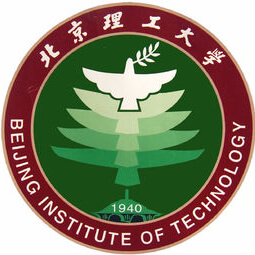高等教育领域数字化综合服务平台

重金属污染修复三维滤毯
矿产开发、农药、化肥等已致大量土地和水质发生重金属超标 污染,严重影响了农牧渔业产业的发展和人类的健康。通过纤维改性和无机物 分子筛技术处理,先后开发了 4 种不同的重金属吸附材料。根据用途,开发了 土壤重金属吸附膜,重金属水质吸附网,超级重金属吸附毯等 5 种产品。通过 本产品的实施,土壤、水源等可以得到极大的改善,符合国家农牧渔业生产的 要求,提升产品品质,确保产品无污染生产。
青岛农业大学
2021-04-11

3DTOS 隧道动态三维监控系统
随着国家交通建设的日益发展,在山区修建高速公路越来越多,隧道开挖是山区修 建高速公路时常常会遇到的课题。实时监测对于保证隧道的安全施工具有十分重要的意 义。本系统可对海量极的现场监测数据进行建库管理,实现方便、快速、直观的图形断 面交互查询(包括三维交互式查询及二维图形断面二种模式),程序能够根据监测数据 进行智能预测并预警,并以一种全新的三维可视效果来表达隧道施工的安全级别,可为 隧道安全施工进行全程三维动态监控。
同济大学
2021-04-13

古建筑三维激光信息采集技术
北京工业大学
2021-04-14

实时多人无标记三维运动捕捉技术
项目成果/简介:动作捕捉技术(motion capture)在影视、体育、安防等领域具有广泛应用。传统的动作捕捉分为两大类,光学动捕系统通过在采集环境部署多个红外摄像头,再在人员的动捕服上放置光学标记球来求解出采集者的姿态信息,从而实现对人体运动的捕捉与动画映射;惯性动捕系统通过惯性测量单元(IMU)来采集肢体的运动信息,采集设备相对更轻便,但采集精度不如光学动捕系统。光学动捕系统包括Motion An
清华大学
2021-01-12

光学投影式三维形貌测量系统(产品)
Ø 成果简介:光学投影式三维形貌测量方法是一种非接触、高精度、快速获取被测物三维形貌的方法。基于此方法开发研制而成的测量系统可在1分钟内获取测量区域10cm2-400cm2内被测物三维形貌,测量分辨率可达到200μm。该系统硬件部分包括小型化条纹投射装置、高分辨率数字CCD相机和控制电路,自行编写的软件拥有仪器控制、图像采集、分析和可视化等功能并嵌套相位解包裹专用算法。便携式设计使该套系统可方便应用于车间、厂矿等各种测量环境。Ø 项目来源:自
北京理工大学
2021-01-12
.jpg)
区域隐伏矿体三维定量预测评价
区域隐伏矿体三维定量预测评价,可以用一句话概述地表达为:以多年积累的二维地质调查成果与经验为基础,依托三维可视化技术拓展为三维实体地质模型,以成矿控制因素有利组合部位的定量圈定与筛选实现深部矿产资源的定位与评价。因此,系统地收集研究区的地质、矿产基础资料,在平面地质图和剖面(钻孔)图等基础地质资料的基础上利用地质三维建模技术构建三维地质模型;在此基础上,针对成矿有利部位开展矿产地质调查、深部钻探和大比例尺物、化探等工作;利用三维矿产预测模型,有机的组合各种成矿预测相关信息,提取有利成矿条件,寻找有
中国地质大学(北京)
2021-04-14

基于单幅图像的三维模型重建(技术)
成果简介:计算机图形学、虚拟现实和电子游戏等领域的快速发展,导致对 具有高度真实感的三维模型的需求与日俱增。本项目充分利用镜面对称约束,同时利用特征点作为位置约束以及添加透视投影等约束,通过最小化线 性约束下的曲面二次目标函数实现曲面重建,最后进行纹理提取,从而获得逼真的三维模型。该技术具有输入信息简单,建模速度快,真实感强等优点,目前已经获得“基于单幅图像的光滑对称曲面重建方法”国家发明专利授权。 项目来源:自行开发 技术领域:计算机应用技术,计算
北京理工大学
2021-04-14

高端制造三维图形处理系统
激光制造、增材制造等高端制造技术,在精密加工、航空航天部件加工等众多领域得到大量的应用,可以完成传统加工系统不能完成的大量加工工艺。因为制造工艺复杂,应用涉及众多重要领域,并且所涉及的三维图形处理和控制等核心技术一直掌握在国外厂商手里,因此外国一直将这些高端制造技术对中国进行严格的出口管控,相关技术和系统也成为了中国急需突破的卡脖子工程。其中,三维图形处理系统是高端制造系统中极为核心的功能系统,相关技术也被国外所严格管控,国内有众多技术空白需要突破。
针对该现状,我们对相关核心技术进行了多年的研究,投入了大量的人力物力进行了系统研发,在关键技术上形成了突破,并研制出了可用于替代国外产品的核心系统。也因为我们所形成的技术积累,我们承担了第一批国家重点研发计划项目“航空航天典型部件激光制造”中的三维图形处理系统的研究任务,并在实际应用场景中对我们的技术和系统进行了有效验证。
主要技术指标
(1)可以解析众多主流三维图形文件,读写其中的各种三维模型数据。
(2)可以分析三维对象的拓扑缺陷。
(3)可以多种方式在三维加工对象表面布局复杂加工图案。
(4)可以按照加工工艺参数,完成加工区域划分、图案分割和图元空间投影等复杂的功能。
(5)可完成工件装夹定标、加工区域边界输出、加工路径优化等丰富的功能。
(6)输出可加工的区域图案文件,供 5 轴联动数控中心执行加工操作。
(7)直观的图形操作功能。
西安电子科技大学
2023-03-17

新型三维乳腺超声层析成像设备
目前医学影像设备行业正处于快速增长时期,尤其是乳腺癌筛查影像设备,预期市场规模数百亿。本项目属于生物医学超声学中的超声层析成像技术领域。
乳腺癌已经是全球发病率最高的癌症,其早期筛查成像至关重要。现有的主要筛查成像方法有:乳腺X线摄影(乳腺钼靶)、乳腺超声和乳腺核磁,但现有方法均存在不足。首先,乳腺钼靶可获得高分辨率的乳腺二维投影图像,但是其图像中可疑组织会与乳腺组织相互重叠,尤其对于乳腺含量较高的致密乳房,很难有效筛查;第二,乳腺超声可以获得乳腺的断层图像序列,从而避免可疑组织与乳腺组织的相互重叠,但是其图像质量欠佳,且严重依赖医生技术;第三,乳腺核磁可提供乳房的三维图像,但其不仅比较笨重,而且价格非常昂贵,不适用于大规模早期筛查。
针对现有乳腺超声技术的局限性,新型乳腺超声层析成像可自动获取高分辨率的三维乳腺图像。该技术采用超大孔径环阵探头,实现360度全向聚焦合成孔径成像,从而获得超高分辨率反射图像;同时,乳腺超声层析成像设备通过自动机械移动环阵探头,实现自动化的乳腺三维成像,降低了对操作医生技术水平的依赖性。此外,该技术还能利用透射波的传播时间及强度,重建定量的声波传播速度分布图像和声波衰减分布图像。
本项目的成果是一款创新型三维乳腺超声层析成像设备,该设备作为新型乳腺癌筛查工具,能够自动获取三维高分辨率乳腺图像。核心技术成像流程如下:首先,受检者需平卧在床上,使乳房通过床上的一个开口自然下垂,浸入开口下方的水箱中,并由环形超声换能器阵列包围乳房,通过多通道收发前端和多路复用器,依次控制各超声换能器发出声波,同时其他换能器接收回波和透过波信号。核心技术借助超大孔径环阵探头显著提升传统超声图像质量,利用透过波声速信息解决相位误差问题,结合机械移动自动获取三维图像,并输出最终筛查结果。该设备的主要客户群体包括各级医院、医疗体检机构和第三方医学影像中心。
目前该项目在持续研发完善中,截至2022年,该技术已经完成了关键核心技术包括环阵超声换能器、128通道多路收发前端、2048通道多路复用器和成像算法(如图)。
北京航空航天大学
2023-03-24

光学投影式三维形貌测量系统(产品)
成果简介:光学投影式三维形貌测量方法是一种非接触、高精度、快速获取被测物三维形貌的方法。基于此方法开发研制而成的测量系统可在1分钟内获取测量区域10cm2-400cm2内被测物三维形貌,测量分辨率可达到200μm。该系统硬件部分包括小型化条纹投射装置、高分辨率数字CCD相机和控制电路,自行编写的软件拥有仪器控制、图像采集、分析和可视化等功能并嵌套相位解包裹专用算法。便携式设计使该套系统可方便应用于车间、厂矿等各种测量环境。 项目来源:自行开发 技术领域:测量测试
北京理工大学
2021-04-14




